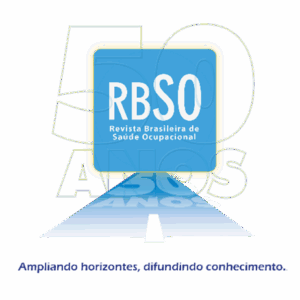Ubirani Otero, Senior Technologist at the National Cancer Institute, Rio de Janeiro, RJ, Brazil.
 The proportion of cancers attributable to occupational risk factors ranges from 2% to 8%. Although seemingly small, the World Health Organization (WHO) estimated 2.9 million work-related deaths worldwide in 2019. Of these, 31% (912,000 deaths) were due to circulatory system diseases, followed by malignant neoplasms, which accounted for 29% (843,000 deaths) of all work-related deaths. In high-income regions such as the United States, Eastern Europe, and the Western Pacific, neoplasms ranked first among occupationally related causes of death.
The proportion of cancers attributable to occupational risk factors ranges from 2% to 8%. Although seemingly small, the World Health Organization (WHO) estimated 2.9 million work-related deaths worldwide in 2019. Of these, 31% (912,000 deaths) were due to circulatory system diseases, followed by malignant neoplasms, which accounted for 29% (843,000 deaths) of all work-related deaths. In high-income regions such as the United States, Eastern Europe, and the Western Pacific, neoplasms ranked first among occupationally related causes of death.
Despite the global relevance of work-related cancer, its frequency varies between countries due to differences in legislation (more restrictive or flexible standards), the prioritization of agents for prevention and surveillance, economic factors influencing which substances are recognized and regulated, the geographical distribution of exposures and economic activities, and the existence of different reference lists from international cancer research agencies such as the International Agency for Research on Cancer (IARC).
In Brazil, updating the Work-Related Diseases List (Lista de Doenças Relacionadas ao Trabalho – LDRT) had become urgent. Twenty years after the first version, substantial changes had occurred in work processes, including the incorporation of new technologies, new exposures, and altered exposure contexts. To address this, a Technical Working Group was established by CGSAT/SVS/MS (Coordination-General for Occupational Health Surveillance, Health Surveillance Secretariat, Ministry of Health). Regarding cancer, INCA (Brazilian National Cancer Institute) was invited to participate in the discussion and consensus group, composed of specialists, researchers, representatives of Occupational Health Reference Centers, members of the Labor Prosecution Ministry, other ministries, and worker representatives.
The updated LDRT, now structured by causal agents and diseases, expanded from 182 to 347 disease codes and from 14 to 50 types of neoplasms, incorporating new occupational factors such as night work, viral agents (HPV, HIV), pollutants, and chemical substances. The IARC list was adopted as the gold standard, while neoplasms linked to occupational exposures identified in at least two other international lists were also considered.
The Brazilian Journal of Occupational Health/Revista Brasileira de Saúde Ocupacional (RBSO) presents the experience of the INCA’s Environment, Work, and Cancer Technical Division in this process through the article Work-related cancer: The Brazilian National Cancer Institute’s Experience in Updating the Ministry of Health’s 2020 List of Work-Related Diseases (vol. 50, 2025), published in the Occupational Cancer Dossier.
Practically, having an updated list means recognizing cancer as an occupational disease, acknowledging that specific exposures and/or exposure circumstances may contribute to tumor development. This allows for preventive measures, disease and exposure surveillance, and protection of workers’ rights and their families.
Brazil now has a broader and more up-to-date legal framework, providing decision-making support for managers while expanding access to information for workers and employers on occupational cancer risks.
Furthermore, the list provides technical and epidemiological support for educational initiatives and facilitates the identification and reporting of work-related cancer cases (Lists A and B) in the Brazilian National Disease Notification System (SINAN). It is expected that the LDRT will strengthen surveillance actions, reducing the incidence and mortality of work-related diseases—especially cancer—thereby promoting safer and healthier workplaces.
To read the article, access
Otero U.B., et al. Work-related cancer: The Brazilian National Cancer Institute’s Experience in Updating the Ministry of Health’s 2020 List of Work-Related Diseases. Rev Bras Saude Ocup [online]. 2025, vol. 50, edoc1 [viewed 4 November 2025]. https://doi.org/10.1590/2317-6369/07525pt2025v50edoc1. Available from: https://doi.org/10.1590/2317-6369/07525pt2025v50edoc1
External links
Revista Brasileira de Saúde Ocupacional – RBSO
Revista Brasileira de Saúde Ocupacional (Fundacentro)
Revista Brasileira de Saúde Ocupacional – X
Como citar este post [ISO 690/2010]:



















Recent Comments